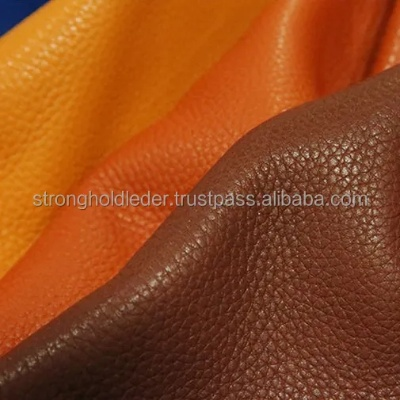Writing Effective Textile Import Labels
: Effective Textile Import Labels for Better Trade and Compliance,The importance of textile import labels cannot be understated in ensuring smooth trade and compliance with international standards. Effective labels not only facilitate the identification, classification, and tracking of textile products but also play a significant role in reducing customs delays and increasing overall efficiency. This article outlines the key elements that must be included in an effective textile import label, including accurate product descriptions, detailed specifications, and compliant information such as origin and manufacturing methods. Additionally, we will discuss the benefits of using standardized labels and highlight best practices for labeling to ensure transparency and minimize legal challenges. By following these guidelines, importers can streamline their supply chain, reduce errors, and comply with global trade regulations, ultimately enhancing the competitiveness of their products and businesses.
Introduction: Textile imports are a significant aspect of international trade, and understanding how to write accurate and compliant textile import labels is crucial for both businesses and governments. This guide aims to assist you in creating effective import labels for textile products, covering the essential components required to ensure compliance with import regulations and avoid legal issues.
Table 1: Labeling Requirements for Textile Products | Label Information | Import Regulations | |----------------|-----------------| | Product Name | Full name of the textile product, including brand, model, and any unique features | | Country of Manufacture | List the country where the product was manufactured | | Expiration Date | Ensure that the label indicates the expiration date or shelf life of the product | | Packaging Info | Indicate the packaging type (bulk, packaged, etc.) and dimensions (length, width, height) if applicable | | Material Description | Provide detailed information about the material used in the product, including any special properties or treatments | | Color Coding | Use color-coding to differentiate different products based on color, pattern, or design | | Quantity Per Package | Specify the quantity of the product per package size indicated | | Remarks | Include any additional information such as warnings, precautions, or instructions for use |
Case Study: To illustrate the importance of accurate labeling, let's consider a hypothetical scenario involving a textile import into China. The manufacturer of a high-quality cotton sweater from India has been tasked with submitting an import declaration to comply with Chinese customs regulations. The sweater is labeled with detailed specifications, including its origin, color (light blue), material composition (100% pure long-staple cotton), and a unique printed floral design. The manufacturer also provides a comprehensive list of warnings regarding potential allergic reactions and care instructions for cleaning and drying.
In this case, the import label effectively communicates the essential information necessary for customs officials to assess the product's value and ensure it meets Chinese standards for quality and safety. The label adheres to the requirements outlined in Table 1 and includes specific details that could potentially affect customs clearance times or lead to penalties. By adhering to these guidelines, the company can reduce the risk of non-compliance and improve their chances of a smooth customs process.

Conclusion: Writing effective textile import labels requires careful attention to detail and a thorough understanding of import regulations. Compliance with labeling requirements not only ensures legal compliance but also enhances the reputation and trustworthiness of a brand in international markets. As shown in the example provided, clear and informative labels can greatly facilitate the import process, minimizing errors and reducing the possibility of costly delays. It is essential for businesses looking to expand into new markets to invest in training staff and utilizing technology to streamline the labeling process.
在国际贸易中,纺织品进口标签是确保产品符合进口国质量标准的重要手段,本文将详细介绍纺织品进口标签的编写要点,包括标签的基本格式、内容要求以及案例分析。
纺织品进口标签基本格式
纺织品进口标签通常包括以下内容:
- 产品名称和型号
- 进口国标准编号或名称
- 纤维成分及含量
- 生产日期和保质期
- 制造商或进口商名称及联系方式
- 特殊要求或警示信息
以下是纺织品进口标签的基本英文表格示例:
| 项目 | 描述 | 示例文本 |
|---|---|---|
| 产品名称 | 产品描述 | 纯棉T恤,适合夏季穿着 |
| 进口国标准编号 | 标准依据 | 根据国际纺织品质量标准 |
| 纤维成分及含量 | 主要纤维种类及含量 | 主要采用天然纤维,含量达到XX% |
| 生产日期和保质期 | 生产日期和保质期信息 | 生产日期为XXXX年XX月,保质期为一年 |
| 制造商或进口商名称及联系方式 | 制造商信息 | XXX公司,联系电话:XXX-XXXX-XXXX |
| 特殊要求或警示信息 | 其他注意事项 | 本产品符合进口国安全标准,无过敏成分 |
案例分析

以纺织品进口为例,我们可以根据实际案例来详细说明如何编写纺织品进口标签。
某纺织品公司进口某品牌纯棉T恤
产品名称:某品牌纯棉T恤 进口国标准编号:根据国际纺织品质量标准 纤维成分及含量:主要采用天然纤维,含量达到XX% 生产日期和保质期:生产日期为XXXX年XX月,保质期为一年 制造商或进口商名称:某知名纺织品公司 特殊要求或警示信息:本产品符合进口国安全标准,无过敏成分,符合相关纺织品质量标准要求。
编写纺织品进口标签要点说明 完整性:确保标签内容完整、准确,包括产品名称、型号、进口国标准编号、纤维成分及含量等信息。 2. 清晰易读性:标签应清晰易读,避免使用过于复杂或模糊的词汇,应使用易于理解的图表或图片来辅助说明。 3. 特殊要求或警示信息:在标签中明确标注产品的特殊要求或警示信息,如符合进口国安全标准、无过敏成分等,应提供相应的证明文件或资料。 4. 使用规范:在标签中使用规范的语言和格式,避免使用过于口语化或模糊的词汇,应遵循相关法律法规和标准要求。
纺织品进口标签是确保产品符合进口国质量标准的重要手段,在编写纺织品进口标签时,应确保内容完整性、清晰易读性、特殊要求或警示信息的明确标注以及使用规范,应根据实际情况选择合适的表格和案例进行说明。
Articles related to the knowledge points of this article:



